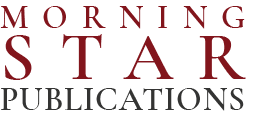When I first entered the Air Force there was a program that helped pay for civilian medical care for spouses and children. The title was the Civilian Health and Medical Program of the Uniformed Services (CHAMPUS).
It started in 1966 as a military equivalent of Blue Cross/Blue Shield. It was a fairly typical health insurance company for those getting care from civilian providers.
For example, when I was the Commanding Officer of the Langley AFB Hospital, there used to be about 140 pregnant women presenting to the hospital each month. We only had the capacity to deliver about 100 per month (more than two of the three Air Force OB/Gyn residency programs.)
The remainder of the women had to deliver at civilian hospitals under CHAMPUS. We were fortunate in that about 40 women per month preferred that, so all was well.
In the late 1980s the Air Force began a program called Catchment Area Management (CAM) at three of its southwest U.S. bases. They were Luke AFB, Davis-Monthan AFB and Carswell AFB.
The program went to local physicians and hospitals. They promised to send military dependents to them in return for a discount on the care they were providing. The program was successful.
In April 1990, there was a meeting at Langley AFB. The goal was to look at doing the same thing in the Tidewater area of Virginia but make it tri-service. At the time, the military had 400,000 people of the 1,600,000 in the area. That represented 25 percent of the medical business.
At that meeting, there were representatives from Tactical Air Command’s (TAC) Surgeon General’s office at Langley AFB. I represented the Air Force. The Commanding Officer from Portsmouth Naval Hospital represented the Navy, the Commanding Officer from Fort Eustis Army Hospital represented the Army.
The plan was to move forward with CAM in the Tidewater area. Brigadier General Bob Buethe (the TAC Surgeon General) mentioned that we needed a seven letter name for the project so that people could dial 1-800-???-????.
I suggested that we take the Tri-Service CAM program and change its name to TRICARE. Everyone agreed and the name was born.
I actually went back to my office and dialed the local TRICARE on my phone. The number was live and the phone was answered: “Nail Shop.” It was a beauty salon.
We started the program in the Tidewater area and it too was successful so we expanded it southward.
In 1996, the Department of Defense was looking to replace the old CHAMPUS program with a new system. They decided upon the system and thought they needed to change the name to go with the new system.
They decided that they would take the name TRICARE and use it on their new program. It now is the name for the civilian medical care program that the Department of Defense uses.
It’s really too bad the Department of Defense does not give out royalty checks on names they choose to use.
